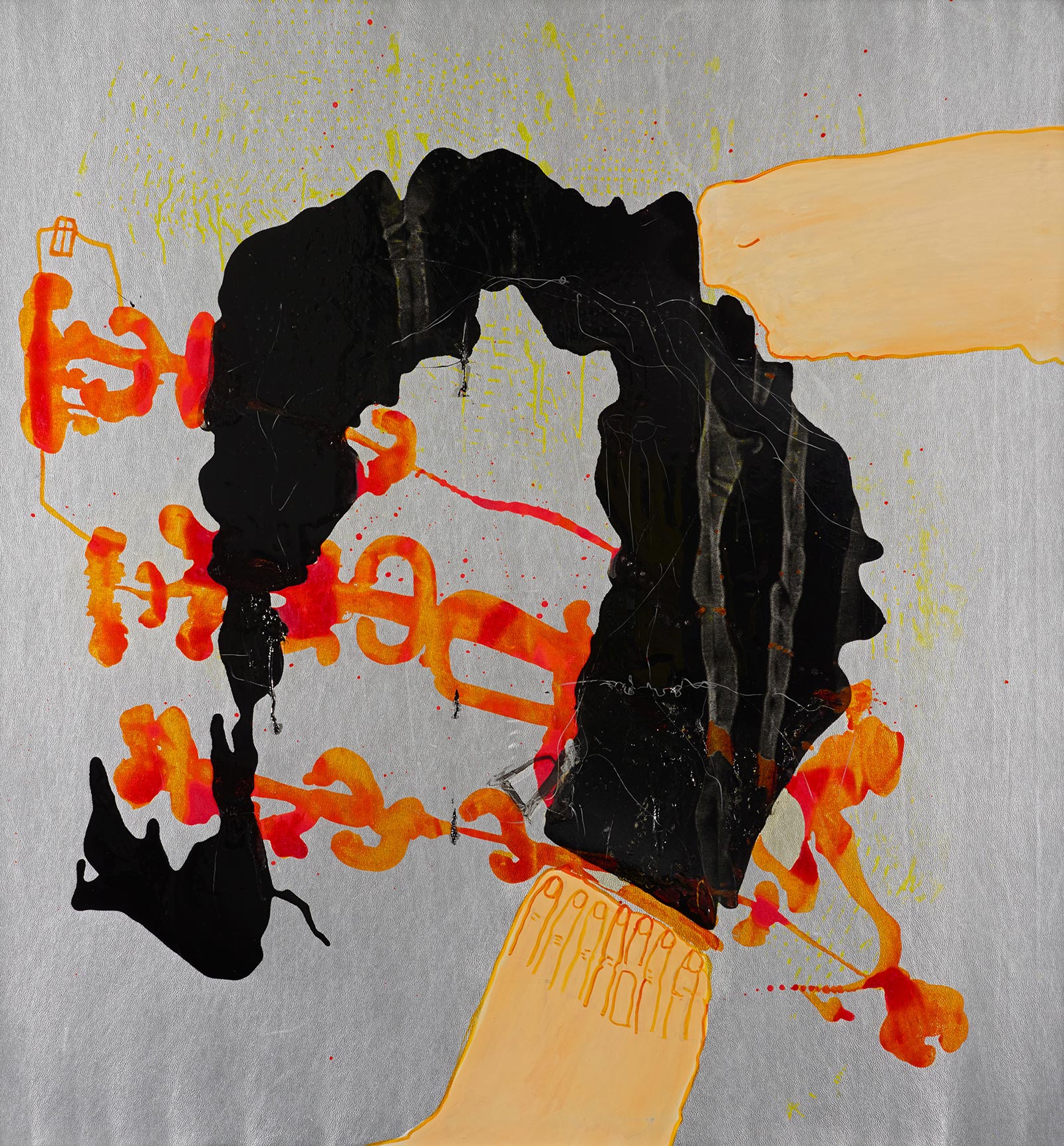
Michaela Eichwald
Heute Journal
141 x 131 x 3 cm
Acrylic, lacquer, shellac ink and
metallic marker on pleather
2020
Michaela Eichwald (German, born in 1967) works with diverse media such as painting, text, sculpture, and photography, which reflect her training in literature, philosophy, and art. Her approach to painting – the medium she is most known and celebrated for – owes itself to the German tradition of so-called ‘bad painting’, formal and conceptual painterly endeavors to challenge the medium, and deskill it to renew it using humor and (self-)irony. Eichwald is fully aware of the position of the artist in 21st-century Western capitalistic society, which she addresses in a serious but ironic manner. She therefore uses unconventional synthetic supports like cheap imitation leather (pleather), often used, for example, in the car industry for seat upholstery, thus attacking the idea of a neutral canvas being a base for valuable artwork, and pointing at the rules and traditions of the art system. Appropriating mass-produced fabrics, she stays in a dialogue with artists from the past, such as Sigmar Polke. Eichwald likes the visible structure of the pleather, often in beige, black, or gray colors, on which she paints directly, without a primer coat, stressing the intuitive process of image-making.
Eichwald’s paintings are densely layered, combining all kinds of less common painterly materials. In Heute Journal (2020), or Today News, the artist applied acrylic, lacquer, shellac ink, and metallic marker onto her signature pleather, depicting forms that hover between abstraction and figuration. The black form might suggest the newsreader with black hair on a silver television screen, but for the artist it was, firstly, the excitement of the painting process: in an interview she said that she loved how the black paint reacts with the silver of the pleather. Later on, she added strokes of red shellac that remain abstract in the image. Eichwald works without a primary concept and prefers to be guided by the needs of the image, which become known only during the painting process. The idea of the unadorned, mundane but ‘real’ art fits the subject of news and television, which are indispensable elements of today’s daily life, where they form a recurring point of reference for many people around the world.